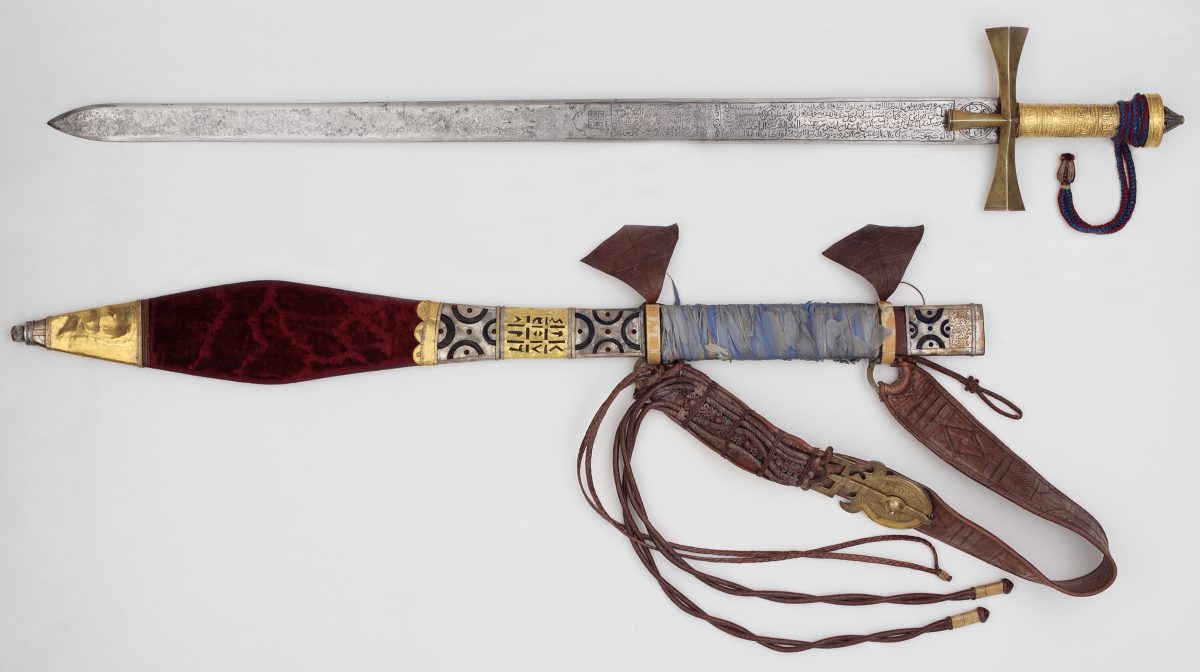



Title: Sword, Scabbard and Baldric
Date: dated 1312 AH (1898–9 AD)
Location: Sudan
Materials: steel blade, forged and engraved; hilt and scabbard with wooden cores, decorated with embossed gold and silver sheet, silver filigree, brass, glass paste, leather, velvet, silk and ivory
Dimensions: 107.2cm (length, sword); 92.8cm (scabbard)
Accession Number: MTW 1132
Other Notes:
This sword was made for ‘Ali Dinar Zakariyyah Muhammad al-Fadl, the last independent sultan of the Kayra dynasty in Darfur. The sword was evidently part of his regalia, since both the quillon tips bear his personal seal. When the British put down the uprising of the Sudanese Mahdi, Muhammad Ahmad, in 1898 ‘Ali Dinar re-established the sultanate of Darfur and ruled there till its annexation in 1916.
The design of the hilt and quillons derives from the European knightly sword of the Middle Ages, with its large cruciform cross-guard. The straight two-edged blade is engraved with Arabic inscriptions, including a dedication to ‘Ali Dinar, and roundels, squares and panels with talismanic inscriptions, some of them in cabbalistic script.
Bibliography:
D. Alexander, The Arts of War. Arms and Armour of the 7th to 19th Centuries, The Nasser D. Khalili Collection of Islamic Art, volume XXI, London 1992, cat.144, pp.210, 212–13.
S. Vernoit, Occidentalism. Islamic Art in the 19th Century, The Nasser D. Khalili Collection of Islamic Art, volume XXIII, London 1997, cat.29, pp.56–7.
J.M. Rogers, The Arts of Islam. Masterpieces from the Khalili Collection, London 2010, cat.416, p.349.
Zoom
Close

Create your own collection of artworks that you can print or save as a PDF. Please enter you email to enable feature.
Sword, Scabbard and Baldric | MTW 1132
Has been added to your collection.
TIP:
You can now access and view your collection from the main menu at any time.